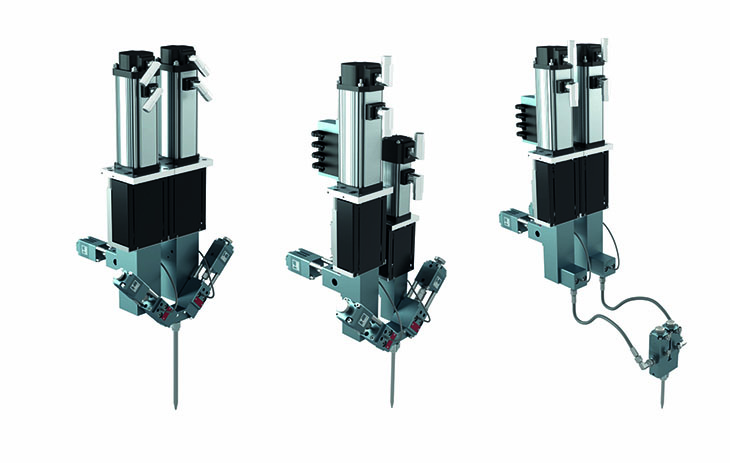Manufacturing cybersecurity threats are becoming more of an issue at facilities worldwide. If professionals fail to adequately safeguard their data and other assets, successful attacks could become extremely costly events that are significant enough to close businesses temporarily or permanently.
Many underestimate the ramifications of lost industry data, which could contain sensitive customer details, like credit card numbers. Manufacturers could face major public relations crises that cause long-term reputational damage.
The data could also include trade secrets and other confidential information, meaning the loss could seriously affect marketplace competitiveness and growth capabilities. A company’s profitability could significantly decrease in such cases, and business leaders may need to delay long-awaited plans, such as expanding to other markets or launching new products.
However, knowing about the most likely threats is a great step in protecting against them. Here are some types of attacks to be particularly vigilant against this year and for the foreseeable future.
1. Insider Threats
Your employees may not intentionally put industry data at risk. Even so, the far reach of the internet means workers must take precautions to ensure files don’t end up in the wrong hands.
A 2022 Proofpoint study showed a 44% increase in insider threats in just two years. Moreover, negligence was the top issue in such reported incidents, mentioned in 56% of cases. Using insecure devices, forgetting to upgrade software and not following a company’s security policies were some of the top reasons employees posed threats. In contrast, malicious insiders were behind 26% of these incidents.
Automatic updates on employees’ computers can reduce these manufacturing cybersecurity threats. Another possibility is to restrict how much data workers can access and ensure the information they can handle directly relates to their roles.
2. Cyber-Extortion Incidents
Cyber extortion is an umbrella term encompassing incidents where criminals force people to hand over data, money or other assets, typically while under threat. A 2023 study from Orange Cyberdefense showed manufacturing was the sector most affected by cyber-extortion threats.
A related takeaway was that 82% of the entities dealing with cyber extortion are small businesses. That’s problematic because such incidents could be particularly damaging for organizations with comparatively fewer resources.
Creating a data recovery is a critical cybersecurity step for companies of all sizes. Data loss is becoming more common, particularly during remote work. However, threat actors will have little or no power to make companies with copies of essential data comply with demands.
3. Ransomware
Some manufacturing cybersecurity threats fall into multiple categories. Ransomware is a good example since it’s a type of malware most people consider cyber extortion. A successful ransomware attack locks down files until affected parties agree to pay the ransom. One December 2022 incident involving a Canadian copper-mining company affected IT systems at corporate offices and a mine.
A 2022 data breach report from Verizon revealed a 13% year-over-year jump in ransomware attacks compared to 2021. That increase was greater than the rise in the past five years combined, suggesting attackers increasingly choose this method.
Experts are of two minds about whether people should pay the ransom. Some say there’s no guarantee criminals will provide the decryption keys necessary to restore data access once people pay. Others point out that retrieving information from a backup often takes a while, which is problematic when the affected systems are critical for business.
However, a best practice is to keep a thorough data inventory, including the type and where it resides. After all, if you don’t know what kind of information you have and where it is within your company, it’s impossible to protect it against ransomware or other manufacturing cybersecurity threats.
4. Cybersecurity as an Afterthought
One of the stark realities associated with manufacturing cybersecurity threats is that people in this industry face greater risks by pursuing progress. The possible attack surface for criminals to target grows larger as today’s factories become increasingly connected. However, a 2022 report from Capgemini Research Institute indicated respondents don’t seem to grasp the need for tighter cybersecurity.
The study showed 53% of people from industrial sectors believed cyberattacks would more frequently target smart factories. However, there’s plenty of room for improvement because only 51% of respondents said they had default cybersecurity practices within their smart factories.
Another finding was that 51% of those polled said cyberattacks primarily start within their partner and vendor networks. That’s a strong reminder for manufacturers to vet all service providers and hold them to minimum cybersecurity standards.
However, it pays off for people to prioritize cybersecurity. The research indicated the companies demonstrating best practices across critical aspects of cybersecurity were 72% better at reducing the impacts of attacks than those who were less advanced in their preparedness.
How Will You Prepare for Manufacturing Cybersecurity Threats?
These are some of the major issues making it more challenging for manufacturers and other parties with industrial data to protect that content. However, being proactive against these problems is one of the best ways to make successful attacks less likely. Treating better cybersecurity as an ongoing goal also minimizes complacency.


























